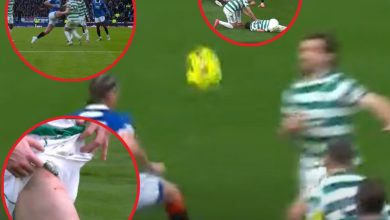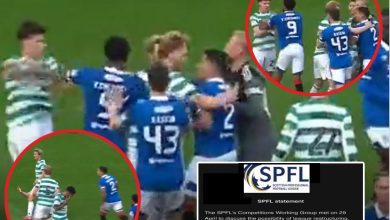In a dramatic semi-final of the Scottish League Cup 2025 Semi‑Final, Celtic edged out Rangers 3-1 after extra time to reach the final. As the club’s captain, Callum McGregor has now opened up on the tactical blueprint laid down by interim manager Martin O’Neill — and it makes for compelling reading.
—
A Moment of Transition
O’Neill returned to lead Celtic on an interim basis amid turbulence at the club. Brendan Rodgers had recently departed, and the ethos of the squad had been under strain. McGregor said that the arrival of O’Neill (and his assistant Shaun Maloney) brought an immediate shift in tone. “They’ve come in with a real positivity … It’s just about reminding the players how good they are.”
According to McGregor, that change in environment allowed the squad to reset mentally — a prerequisite for the high-stakes clash against Rangers.
—
The Tactical Framework
McGregor provided insight into how O’Neill structured the gameplan:
Compact midfield control: Celtic were instructed to maintain a strong block in the middle, denying Rangers the space to build through their central channels. The emphasis was on quick transitions once possession was won.
Width and overloads: While the midfield sat deep, the full-backs and wingers were encouraged to push high and widen the play — especially when Rangers dropped deeper following their red-card incident.
Set-piece alertness and finishing: McGregor highlighted the importance of being “ready to shoot when the chance comes”. He delivered a thunderous extra-time strike to put Celtic back ahead.
Exploiting the numerical advantage: Rangers went down to 10 men after a straight-red for Thelo Aasgaard. Celtic adapted to this by shifting to quicker attacks, making use of extra space and reduced opposition density.
—
McGregor’s Key Moments
> “If you don’t shoot you don’t score — it was a big moment in the game.” — McGregor on his long-range strike.
McGregor’s goal at 93 minutes (25 yards out) was not just a finish — it was the execution of an O’Neill-inspired emphasis on seizing moments, particularly when the opposition was vulnerable. Following the red card, Celtic were instructed to remain composed, patient, and then strike when the opportunity presented.
—
Managing the Psychology
Beyond on-field instructions, McGregor underlined the psychological aspect:
Renewing belief in the squad and its history under O’Neill: “He understands the fabric of the club.”
Resetting response to pressure: With relegation of previous management and manager changes, O’Neill quickly created clarity and calm in the camp.
Emphasising every individual’s role: Rather than a radical tactical overhaul, the message was: do your job, do it well, and trust each other.
—
Why It Worked Against Rangers
The red card forced Rangers into a defensive posture; Celtic’s game-plan allowed them to exploit the reduced defensive load.
McGregor & co. shifted play effectively, drawing out the defence and then accelerating into space — the long-distance goal was symptomatic of this approach.
The set-piece and wide play strategy allowed Celtic to destabilize Rangers when their shape was already compromised.
The mental freshness injected by O’Neill’s arrival removed the fatigue and uncertainty that had plagued them in recent matches; McGregor admitted the semi-final was the “perfect game” to capitalise on that reset.
—
What This Means Going Forward
For Celtic: the match provided a momentum boost and tactical vindication for O’Neill’s interim period. The squad looks re-energised, and McGregor’s leadership appears stronger than ever.
For Rangers: the loss underlines the fragility that remains when hit by both a sending-off and a well-drilled opponent with momentum.
For McGregor personally: he continues to set the tone not only through his performances, but also through articulation of tactics and mindset — pointing to a captaincy that is as strategic as it is symbolic.










